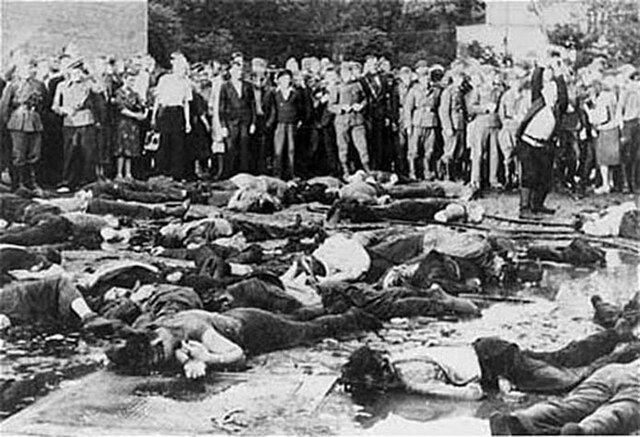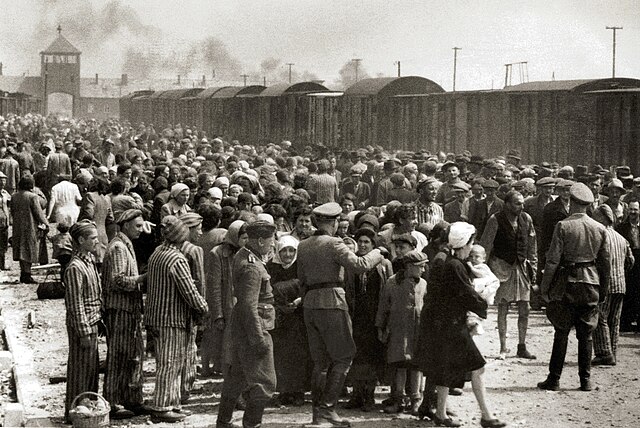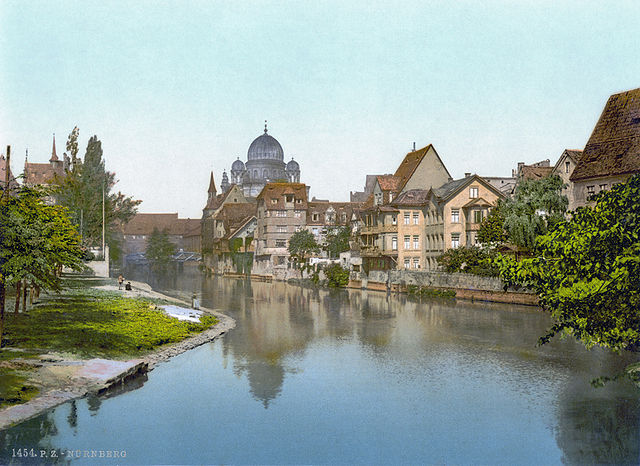The Kovno Ghetto was a ghetto established by Nazi Germany to hold the Lithuanian Jews of Kaunas (Kovno) during the Holocaust. At its peak, the ghetto held 29,000 people, most of whom were later sent to concentration and extermination camps, or were shot at the Ninth Fort. About 500 Jews escaped from work details and directly from the ghetto, and joined Jewish and Soviet partisan forces in the distant forests of southeast Lithuania and Belarus.
Monument of the Kaunas Ghetto
Civilians and German soldiers looking at the massacre of 68 Jews in the Lietukis garage of Kaunas on June 25 or 27, 1941, during the Kaunas pogrom
Tanchum Aharonsteim, Deputy Chief of Kaunas Ghetto Jewish Police and Commander of the Public Order Service, subordinate to Gestapo, with a baton in the Kovno Ghetto in 1944
Aharon Barak, survivor of the Kovno Ghetto and later President of the Supreme Court of Israel (1995–2006)
The Holocaust was the genocide of European Jews during World War II. Between 1941 and 1945, Nazi Germany and its collaborators systematically murdered some six million Jews across German-occupied Europe, around two-thirds of Europe's Jewish population. The murders were carried out primarily through mass shootings and poison gas in extermination camps, chiefly Auschwitz-Birkenau, Treblinka, Belzec, Sobibor, and Chełmno in occupied Poland. Separate Nazi persecutions killed a similar or larger number of non-Jewish civilians and POWs; the term Holocaust is sometimes used to refer to the persecution of these other groups.
Jews arriving at Auschwitz II in German-occupied Poland, May 1944. Most were selected to go to the gas chambers.
View of the Pegnitz River (c. 1900) with the Grand Synagogue of Nuremberg, destroyed in 1938 during the November pogroms
1919 Austrian postcard showing a Jew stabbing a German Army soldier in the back
Territorial expansion of Germany from 1933 to 1941








